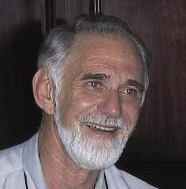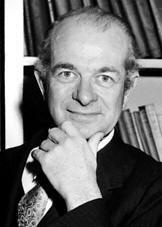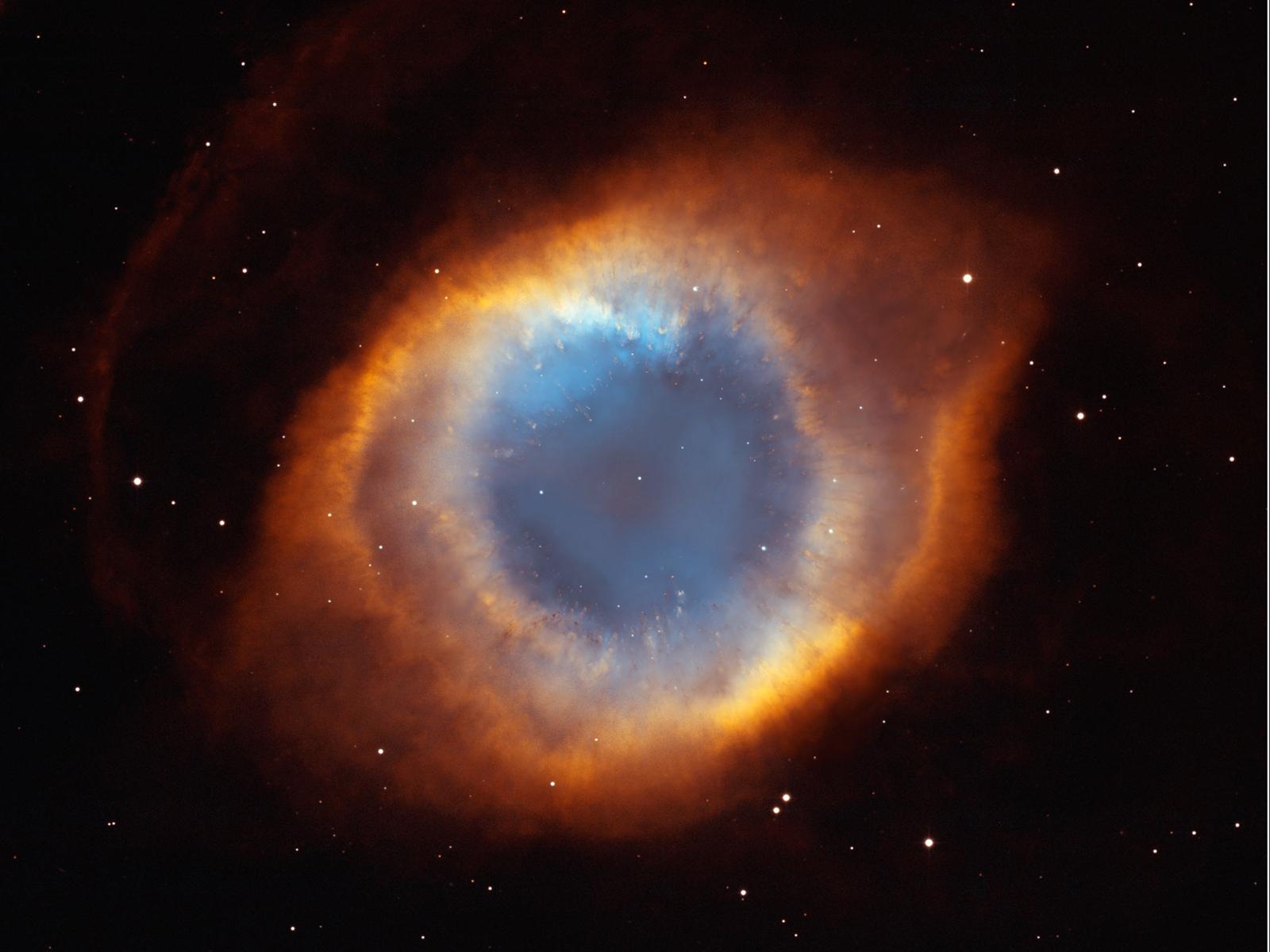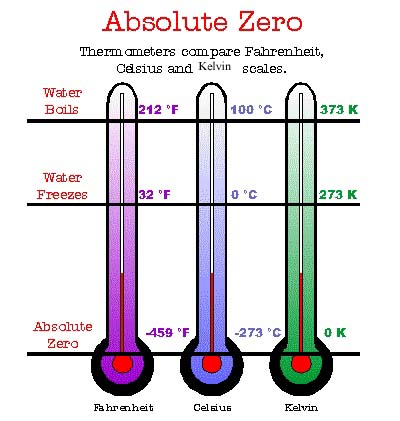|
||||||||||||
|
Figuratively Speaking
Frank Alley |
||||||||||||
|
|
||||||||||||
|
Electrons??
We had a few people take Frank to task over his smashing of our long held belief in “electron movement”, so we gave Frank the option of replying to these objections. We’ve put the objections in plain print and Frank’s replies in italics.
Personally – I find it all fascinating and just wish I had learnt more about it years ago – when the brain was still a functioning member of the body………
|
||||||||||||
|
Objection number 1.
The idea that everything is made from atoms is as old as the Greeks, although it was only scientifically established in 1803 (by Dalton at Manchester).
FA’s Comment: Dalton’s Atomic Theory was published in 1805, and it was a theory only. It was certainly based on the chemistry of the day and was a giant leap forward in understanding the nature of matter.
We cannot see atoms, because they are too small for the eye to resolve, but recent instruments like the atomic force microscope enable atoms to be "seen" as video images. In fact, atoms are incredibly small. In a millilitre (cubic centimetre) of matter, there will be more than 10**22 (10,000 million million million) atoms.
FA’s Comment: The detail of atoms can never be seen. The Heisenberg Uncertainty Principle explains why this is so. An atom has no surface as such. Its extremities are those of an electric field, not something of substance. When you bang your hand on the table, matter is not actually touching matter. What you feel and hear is the interaction of electric fields.
There are some 90+ different types of atoms of increasing size and weight from hydrogen, which has an "atomic weight" of 1 to uranium, which has an atomic weight of 238 (ie, weighs the same as 238 atoms of hydrogen).
FA’s Comment:
There are
92 naturally occurring elements, but even one of these, Technicium is
|
||||||||||||
|
These are the "elements". Even larger elements are possible, but they are increasingly unstable and quickly break down into smaller atoms.
|
||||||||||||
|
||||||||||||
|
Atoms themselves are made of much smaller components like protons and electrons, but this is not important because the energy necessary to break down an atom is enormously greater than anything available in our normal daily lives, so that the atoms can effectively be regarded as the building blocks of everything around us.
|
||||||||||||
|
FA’s Comment: If you are on top of your roof and fall off, you will reckon that gravity is a rather strong force. It is actually the weakest force in nature. The nuclear force which holds the nuclei of atoms together is 10 to the 39th (1039) (That is one with 39 noughts after it) times greater than the gravitational force.. There are only 4 forces, gravity, electromagnetic, electro-weak (involved in radioactive decay) and nuclear (the strong) force. More about protons and neutrons later. |
||||||||||||
|
Molecules
The most important property of atoms is that they bind together in clumps, to form molecules, and chemistry can be regarded as the study of all the different types of molecules (chemicals) that are possible. There are a number of slightly different ways in which the atoms bind together, but it is possible to simplify this by saying that each atom has a "valency", which is the number of links that it can make to other atoms. Thus, an atom of hydrogen has a valency of one, an atom of oxygen has a valency of two, an atom of nitrogen has a valency of three and an atom of carbon has a valency of four - which, for most purposes, is that largest valency that is possible. |
||||||||||||
|
FA’s Comment:
This is a rather simplification.
Linus Pauling (2 Nobel prizes) developed what is called a table of
electronegativities. Atoms such as oxygen are very electronegative, or
electrophilic (they attract and grab electrons. Fluorine (as a fluoride in
toothpaste) is frighteningly
Most atoms have more than one valency. Nitrogen has at least 2, valencies of 3 and 5. The transition metals such as iron, chromium, copper have many valencies. For iron, this results in a number of oxides of iron such as FeO, FeO2, Fe2O3, Fe3O4. Unfortunately, the study of chemical bonding is difficult.
|
||||||||||||
|
A molecule is just a clump of atoms in which all the valency links are paired together, so that no free links remain. Thus, an oxygen atom (valency 2) can link to two hydrogen atoms (each valency 1), to form a molecule of water (described by the chemical formula H20) . A carbon atom (valency 4) can link with four hydrogen atoms (each valency 1) to form a molecule of methane (CH4, marsh gas) or with two carbon atoms (each valency 2) to form a molecule of carbon dioxide (CO2); this happens because each oxygen atom uses its two valency links to match two of the four valency links of the carbon.
The important thing to remember is that each molecule is three dimensional and has a shape. Thus, in methane, the four atoms of hydrogen are distributed symmetrically about the atom of carbon, so that we can visualise the molecule as a tetrahedron, with the carbon atom in the centre and the hydrogen atoms at each of the four corners. Indeed, if we think of the atoms as spheres of different sizes that increase with atomic weight, and the valency links as springs connecting the spheres, then the shape of a particular molecule is more or less the shape of its mechanical model.
|
||||||||||||
|
||||||||||||
|
Shape is the essence of chemistry; virtually all the properties of a molecule, such as its melting point and the way it interacts with other molecules are determined by its shape. Almost any set of atoms in which the valency bonds match can form a real molecule, remembering that the smaller atoms are more reactive, that there is more difficulty in fitting larger atoms into a particular space, and that some configurations are not possible because, it would be necessary for two atoms to occupy the same space. Using computers, it is now possible to calculate the precise shape that a particular combination of atoms will assume, and thus to predict its chemical properties.
|
||||||||||||
|
I very quietly confided to my friend that I was having an affair.
She turned to me and asked, 'Are you having it catered'?
And that, my friend, is the definition of 'OLD'!!!!
|
||||||||||||
|
Objection number 2.
Cosmic Bullets: It has been known since the 1960s that the Earth is bombarded by high energy cosmic particles called protons. These particles are smaller than atoms yet hit the Earth with the force of a golf ball landing on a fairway. Researchers at the Pierre Auger Observatory in Argentina say these particles come from active galactic nuclei, or supermassive black holes at the centre of some galaxies. Where does this leave the odd atom without its proton - and what happens to the electron. |
||||||||||||
|
FA’s Comment: Cosmic radiation is the result of nuclear reactions in the hearts of stars (our sun being one of them, and close to us). Cop this: you are the ashes of a star! You star you! Actually, the atoms you are made of have been in existence for more that 10 billion years. You are really very second hand, pre-loved, used. Stars are the places where new atoms are created. The simplest atom is hydrogen, one proton and one electron. From this simplicity, all the natural atoms in the universe are formed, in stars. Hydrogen becomes helium and heavier atoms are formed in the process of nuclear fusion, where atoms are joined together. The process releases a lot of energy. Hydrogen bombs (thermonuclear weapons) work by the fusion of light nuclei. Fission (atomic) bombs work by the splitting of heavy atoms such as uranium or plutonium, into smaller atoms, releasing the binding energy that held the heavy nuclei together. A thermonuclear device needs a fission bomb to initiate the fusion process.
Now, back to you and star dust:
Some 10 billion years or
so ago, a giant star exploded in our galaxy. Its ashes spread out into
space and over a period of time under the influence of mutual gravitation
attraction, our solar
Now, to make things more interesting:
All matter is made of particles called fermions, quarks and electrons. Quarks and electrons have no physical size. So a million of them together would occupy no space! Any number of them you like to imagine, will occupy no space if forced together. Black holes! At the centre of a black hole is what is called a ‘naked singularity’. It is a point in space, but has the mass of a gigantic star, much bigger than our sun. In fact, the whole universe could fit into a naked singularity. So, the ‘Big Bang’! The universe started from a singularity. A singularity which occupied no space. The clock was set at zero. When the big bang happened, the energy expanded (there was as yet no matter). Eventually, when things had cooled down a bit the forces of nature and atoms began to form (matter ‘froze’ out)…and you know the rest. There has been plenty of argument about when this occurred and the times range from 12 billion to 20 billion years ago. The Large Hadron Collider in Switzerland hopes to find what happened in the earliest moments following the Big Bang. There moments are measured in times of 10 to the minus 43 of a second (Planck Time).
There has been no observation of radiation from black holes. Stephen Hawking (A Short History of Time), Lucuscan Professor of Physics at Cambridge had a theory that black holes will slowly ‘evaporate’, that is particles will escape the gravity force of the black hole by that curiosity of Quantum Physics where matter can exist in two places at the same time and under the right conditions, one becomes real, and escapes the black hole. Hawking has had a bit of a long whinge about not being awarded a Nobel prize. The prize is only given for experimentally confirmed theories. Hawking Radiation from black holes has not been observed and in recent times Hawking has backed off and admitted he has been wrong. Perhaps in a future article I could ramble on about what the cosmologists think is the ultimate future of the universe. For the mathematically minded of you….what is the probability of all the atoms in this universe being as they are? The probability of this is about zero. But the universe does exist, so it has a probability of one. How can I get an answer of one, from zero? Easy, just multiply zero by a big number, infinity.
Zero X infinity = one (or thereabouts)
Hence there must be an infinite number of universes! Too horrible to contemplate! Sometimes calculations in physics lead to what seem to be absurdities. In fact, physicists hold the world record for how far off you can be from theory and observation. Fundamental (theoretical) calculations of the rate of growth of a crystal give a certain answer. Physicists did not know what the chemists knew, that crystals have faults and that these faults provide sites for growth (I’m being a bit harsh on physicists). A faultless crystal can only be grown at absolute zero temperature (-273.15 degrees Celsius). That temperature can never be achieved (third law of thermodynamics).
|
||||||||||||
|
Objection number 3.
What then causes “skin effect” which is the tendency of an alternating electric current (AC) to distribute itself within a conductor so that the current density near the surface of the conductor is greater than that at its core. That is, the electric current tends to flow at the "skin" of the conductor. The skin effect causes the effective resistance of the conductor to increase with the frequency of the current.
|
||||||||||||
|
FA’s Comment:
You will remember that
alternating current produces an alternating magnetic field which will in
turn induce further alternating currents. The direction of these induced
currents will be in such a
The impedance is the algebraic sum (phase taken into account) of the ohmic resistance (not affected by frequency), the capacitive reactance and the inductive reactance. Inductive reactance XL is proportional to the frequency of the current. Hence, as frequency increases, XL increases. Capacitive reactance XC decreases with frequency and has no significant part to play in skin effect. With increasing frequency, the impedance in the centre of the conductor increases and the current is forced to take the path of least resistance, away from the centre of the conductor. Below is a table showing the effect of frequency on skin effect. |
||||||||||||
|
Skin depth for circular cross-section copper conductors
I must say that I have enjoyed scratching my head and delving into my ‘past’. Frank Alley.
|
||||||||||||
|
Well!!! Is anyone else game enough to take on Frank??? - if you are, please get in touch. tb
|
||||||||||||
|
God Said, ‘Adam I want you to do something for me.' Adam said, 'Gladly, Lord, what do You want me to do?' God said, 'Go down into that valley.' Adam said, 'What's a valley?' God explained it to him. Then God said, 'Cross the river.' Adam said, 'What's a river?' God explained that to him, and then said, 'Go over to the hill.......' Adam said, 'What is a hill?' So, God explained to Adam what a hill was. He told Adam, 'On the other side of the hill you will find a cave' Adam said, 'What's a cave?' After God explained, he said, 'In the cave you will find a woman.' Adam said, 'What's a woman?' So God explained that to him, too. Then, God said, 'I want you to reproduce.' Adam said, 'How do I do that?' God said 'Geez Adam – don’t you know anything....' then, just like everything else, God explained that to Adam, as well. So, Adam goes down into the valley, across the river, and over the hill, into the cave, and finds the woman.
Then, in about five minutes, he was back. God, his patience wearing thin, said angrily, 'What is it now?' And Adam said 'What's a headache?'
|
||||||||||||
|
Moods
THE MOODS OF A WOMAN
An angel of truth and a dream of fiction, A woman is a bundle of contradiction, She's afraid of a wasp, will scream at a mouse, But will tackle a stranger alone in the house. Sour as vinegar, sweet as a rose, She'll kiss you one minute, then turn up her nose, She'll win you in rage, enchant you in silk, She'll be stronger than brandy, milder than milk, At times she'll be vengeful, merry and sad, She'll hate you like poison, and love you like mad.
THE MOODS OF A MAN
Hungry. Horny. Sleepy.
|
||||||||||||
|
|


 electronegative.
The gas, if released into a room would cause instant combustion of
everything there. Hydrofluoric acid cannot be kept in glass bottles,
because the stuff dissolves glass (used in glass etching). I hated using
this stuff in laboratories. Atoms such as potassium are very
electropositive and throw electrons away. So, bring electronegative atoms
near electropositive atoms and the result is explosive. The chemical bonds
formed are said to be ionic. The bonds holding salt crystals together are
ionic (electropositive atoms combined with electronegative atoms, sodium
and chlorine). However, ionic bonds are the extreme. When two atoms such
as oxygen combine, there is an equal sharing of the electrons between
them, called a covalent bond and it is no simple matter to understand,
except to say that in this state (two oxygen atoms combined to form a
molecule) the nett energy is lower than in the case of two separate oxygen
atoms. The bonding between the atoms of a metal is even more complex and
what kids are taught in high school is actually a bit silly, but
necessary.
electronegative.
The gas, if released into a room would cause instant combustion of
everything there. Hydrofluoric acid cannot be kept in glass bottles,
because the stuff dissolves glass (used in glass etching). I hated using
this stuff in laboratories. Atoms such as potassium are very
electropositive and throw electrons away. So, bring electronegative atoms
near electropositive atoms and the result is explosive. The chemical bonds
formed are said to be ionic. The bonds holding salt crystals together are
ionic (electropositive atoms combined with electronegative atoms, sodium
and chlorine). However, ionic bonds are the extreme. When two atoms such
as oxygen combine, there is an equal sharing of the electrons between
them, called a covalent bond and it is no simple matter to understand,
except to say that in this state (two oxygen atoms combined to form a
molecule) the nett energy is lower than in the case of two separate oxygen
atoms. The bonding between the atoms of a metal is even more complex and
what kids are taught in high school is actually a bit silly, but
necessary.
 system
was formed. Our sun is about 4.5 billion years old and they reckon, has
about the same time left. So the atoms that make up our solar system came
from the remains a star which exploded (supernova). The sun is losing mass
from radiation, some of which gets to us as light, X-rays etc…Light takes
about 8 minutes to get to us. The fusion process releases neutrons. In an
atom, neutrons seem to have an indefinite life. However, when free, their
half-life is about 15 minutes and they decay into protons and electrons.
Now, don’t for a minute think that a neutron is a combination of a proton
and electron. Impossible. Simple Heisenberg calculations show that an
electron cannot exist in the space occupied by an atomic nucleus, let
alone in a neutron. However, a massive flux of protons, neutrons and
electrons comes out of the sun. Calculations suggest that protons have a
half life of about 15 billion years, that is, about the age of the
universe. Electrons are fundamental particles and do not decay into
anything…so far! Protons and neutrons are made of three fundamental
particles, quarks. Quarks have fractional electron charges, plus and minus
2/3 and plus and minus 1/3 electron charge. A proton has a single positive
charge, so it is made up of two quarks with charge +2/3 and one quark of
charge -1/3 electron charge. Neutrons having no nett charge are made of
one +2/3 and two -1/3 electron charge quarks.
system
was formed. Our sun is about 4.5 billion years old and they reckon, has
about the same time left. So the atoms that make up our solar system came
from the remains a star which exploded (supernova). The sun is losing mass
from radiation, some of which gets to us as light, X-rays etc…Light takes
about 8 minutes to get to us. The fusion process releases neutrons. In an
atom, neutrons seem to have an indefinite life. However, when free, their
half-life is about 15 minutes and they decay into protons and electrons.
Now, don’t for a minute think that a neutron is a combination of a proton
and electron. Impossible. Simple Heisenberg calculations show that an
electron cannot exist in the space occupied by an atomic nucleus, let
alone in a neutron. However, a massive flux of protons, neutrons and
electrons comes out of the sun. Calculations suggest that protons have a
half life of about 15 billion years, that is, about the age of the
universe. Electrons are fundamental particles and do not decay into
anything…so far! Protons and neutrons are made of three fundamental
particles, quarks. Quarks have fractional electron charges, plus and minus
2/3 and plus and minus 1/3 electron charge. A proton has a single positive
charge, so it is made up of two quarks with charge +2/3 and one quark of
charge -1/3 electron charge. Neutrons having no nett charge are made of
one +2/3 and two -1/3 electron charge quarks.
 direction
as to produce magnetic fields which will oppose the original induction
field (
direction
as to produce magnetic fields which will oppose the original induction
field (